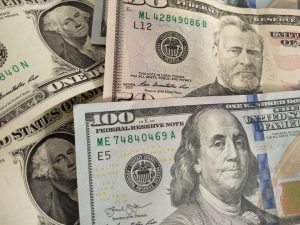Forex, or foreign exchange, is a decentralized market where traders buy and sell different currencies. The movement of forex prices is driven by a variety of factors, including economic, political, and social events. Understanding what causes forex to move is crucial for traders to make informed decisions and achieve success in the market.
Economic Factors
Economic factors are one of the most significant drivers of forex movements. The strength of a country’s economy is reflected in its currency’s value. Positive economic indicators, such as high employment rates, increasing GDP, and rising consumer confidence, can lead to an increase in demand for a country’s currency, driving up its value. Conversely, negative economic indicators can lead to a decrease in demand and a drop in currency value.
One of the most closely watched economic indicators is interest rates. Central banks use interest rates to control inflation and stabilize their economy. When interest rates rise, it becomes more attractive for investors to hold a currency, leading to an increase in demand and a rise in price. On the other hand, when interest rates fall, demand decreases, and the currency’s price drops.
Political Factors
Political events can also have a significant impact on forex movements. Political instability, elections, and policy changes can all affect a country’s economy and, therefore, its currency. For example, a country experiencing political turmoil may see a decrease in foreign investment, leading to a drop in demand for its currency.
Trade policies can also play a role in forex movements. When a country imposes tariffs or other trade barriers, it can negatively impact its economy, leading to a drop in demand for its currency. Conversely, when trade policies are relaxed, it can lead to an increase in demand and a rise in price.
Social Factors
Social factors, such as natural disasters, health crises, and social unrest, can also impact forex movements. These events can disrupt a country’s economy, leading to a decrease in demand for its currency. For example, a natural disaster can disrupt supply chains and lead to a decrease in exports, negatively impacting a country’s economy.
Social unrest, such as protests or civil unrest, can also impact forex movements. When social unrest leads to political instability, it can negatively impact a country’s economy and lead to a drop in demand for its currency.
Market Sentiment
Market sentiment, or the overall attitude of traders towards a particular currency, can also impact forex movements. When traders are optimistic about a currency, it can lead to an increase in demand and a rise in price. Conversely, when traders are pessimistic, it can lead to a decrease in demand and a drop in price.
Market sentiment is often driven by news and media coverage. For example, positive news about a country’s economy or political stability can lead to an increase in demand for its currency. On the other hand, negative news, such as a recession or political turmoil, can lead to a decrease in demand.
Conclusion
In conclusion, forex movements are driven by a variety of factors, including economic, political, social, and market sentiment. Understanding what causes forex to move is crucial for traders to make informed decisions and achieve success in the market. By keeping a close eye on these factors, traders can identify trends and make strategic trades to maximize their profits.





